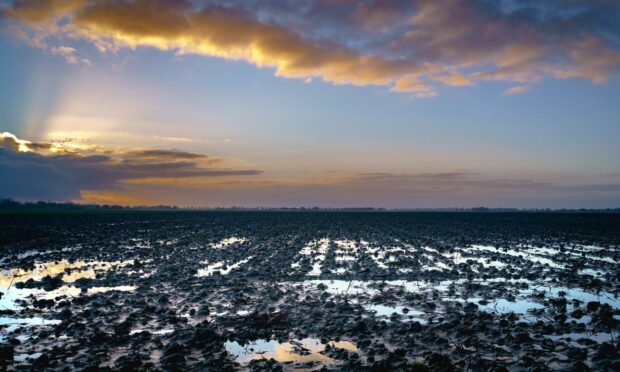Increasingly wet winters due to climate change will increase water pollution from farms and current agri-environment schemes aren’t working well, claims a new report.
A study of river water quality within the upper catchment of Devon’s River Taw during the winter of 2019/20 – one of the wettest winters on record for the UK – found pollutants washing away from farmland increased dramatically.
The work, carried out by researchers at Hertfordshire-based Rothamsted Research, found the amount of soil washed off arable fields and the associated environmental clean-up costs increased by almost twenty-fold compared to average years.
According to the report, large amounts of washed away soil harm both aquatic wildlife and drinking water.
The report found levels of nitrate from recently converted arable land increased by four times, while sediment lost and nitrate run-off from grazed grassland areas roughly doubled.
“These changes in autumn and winter rainfall are elevating run-off and the water pollution problems arising from modern farming,” said Hydrologist Professor Adie Collins from Rothamsted.
“Sadly, current on-farm mitigation strategies, including those subsidised by agri-environment schemes, aren’t working very well.”
Prof Collins said the impact of water pollution from farms was measured as “environmental damage costs” within the report.
The cost of sediment loss from fields during 2016-2019 was estimated at £8 per hectare, however in the wet 2019/20 winter this increased three-fold for existing grassland fields and by more than 20-fold to around £100 per hectare for fields recently converted to arable production.
“Pollution from intensive farming generates environmental damage with resultant costs such as those for drinking water treatment to remove nutrients and sediment,” said Prof Collins.
“Elevated pollution driven by extreme wet weather increases such problems considerably.”
The report claims climate predictions from the study site show this sort of weather pattern and the associated water pollution from agriculture will become more common in the future.
Professor Collins said: “Compared to the period 1981 to 2010, the 19/20 winter had nearly 20% more rainfall, with about 209mm falling in February 2020, which is 133% more than the climatic baseline.
“The elevated sediment losses are therefore a good insight into what we might expect in future climates.”
The study was published in the Journal of Cleaner Production.

